Middle East
Fires continue to rage at key Iran port as explosion death toll rises to 46 | Oil and Gas News
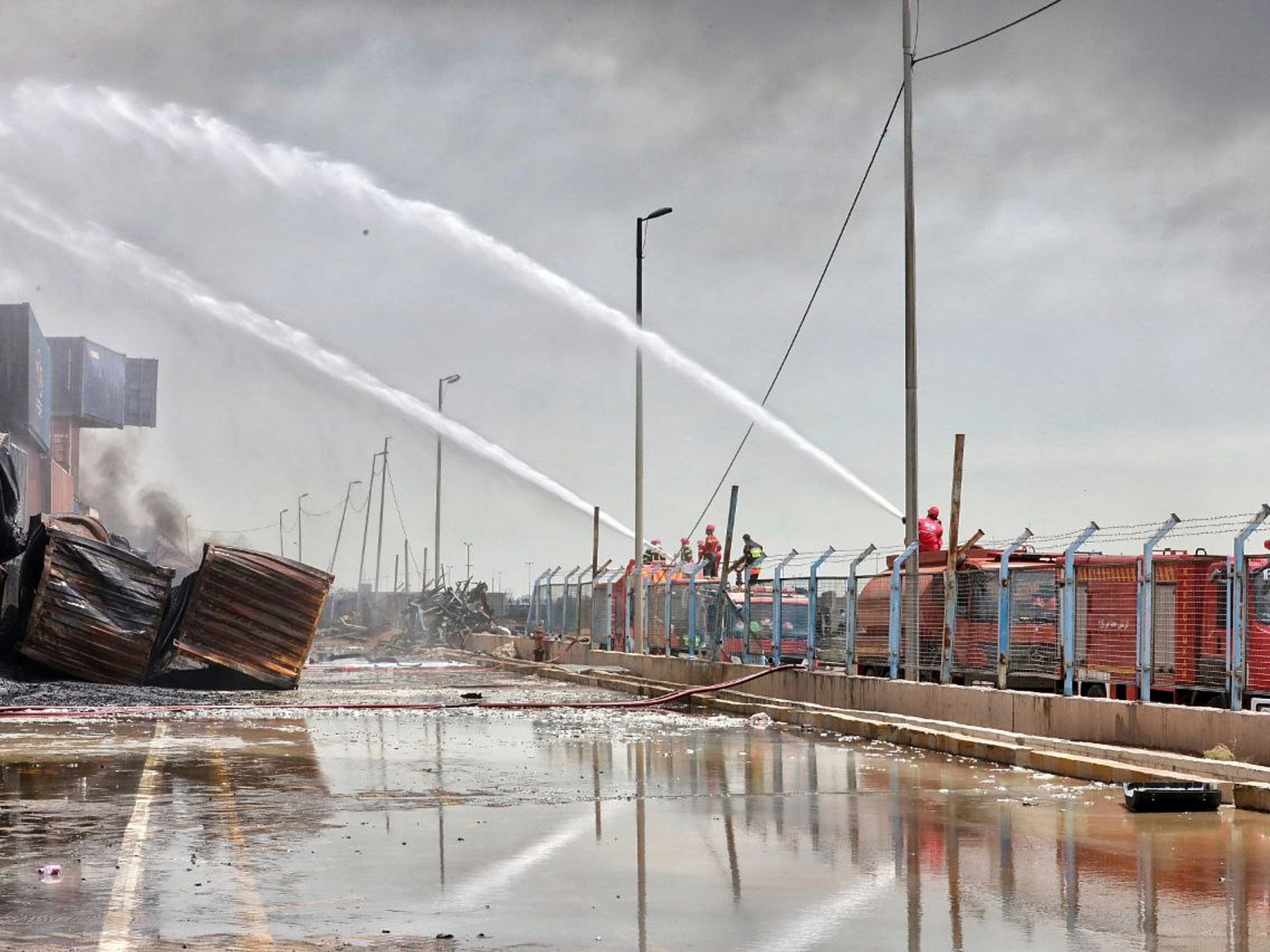
Interior Minister Eskandar Momeni says the ‘culprits have been identified’ and the explosion was caused by ‘negligence’.
Firefighters continue to battle raging fires at Iran’s largest commercial port, Bandar Abbas, two days after a massive explosion killed dozens and injured more than 1,000 people, Iranian state media report, as questions linger as to the blast’s cause.
“The death toll in the Shahid Rajaei Port fire has reached 46,” the official IRNA news agency reported on Monday, quoting Mehrdad Hassanzadeh, the crisis management director for Hormozgan province, where the port is located. Most of the injured had since been released after treatment, he added.
Only “120 wounded are still in hospital”, Interior Minister Eskandar Momeni, who is visiting the affected area, told state TV on Monday.
The blast took place on Saturday at Shahid Rajaei Port in Iran’s south near the strategic Strait of Hormuz, a waterway through which one-fifth of global oil output passes.
Iran’s state TV showed images of firefighters dousing the flames, saying the damage would be assessed after the fire is fully brought under control.
Heavy charcoal-black smoke continued to billow over low flames at part of the site, above which a firefighting helicopter flew, pictures from the Iranian Red Crescent showed.
What caused the blast?
It was not immediately clear what caused the explosion, but the port’s customs office said it likely resulted from a fire that broke out at a depot storing hazardous chemical materials.
Momeni said on Monday that “culprits have been identified and summoned”, and that the blast was caused by “shortcomings, including noncompliance with safety precautions and negligence”.
Iran’s Supreme Leader Ayatollah Ali Khamenei has ordered a thorough investigation into the incident.
In the face of external and expert speculation, Iran has denied reports that the blast was caused by a shipment of missile fuel.
National day of mourning declared
On Sunday, President Masoud Pezeshkian visited hospitals treating the wounded in Bandar Abbas. Since the explosion, authorities have ordered all schools and offices in the area closed and urged residents to avoid going outside “until further notice” and use protective masks when doing so.
Authorities declared Monday a national day of mourning, while three days of mourning began on Sunday in Hormozgan province.
The explosion took place as Iranian and US delegations met in Oman for high-level talks on Tehran’s nuclear programme, with both sides reporting progress.
While Iranian authorities so far appear to be treating the explosion as an accident, it also comes against a backdrop of years of shadow war with regional enemy Israel. Iran has in the past accused Israel of being behind such attacks.
According to The Washington Post, Israel launched a cyberattack targeting the Shahid Rajaei Port in 2020.
Middle East
Israel’s Shin Bet chief ousted by Netanyahu says will stand down on June 15 | News
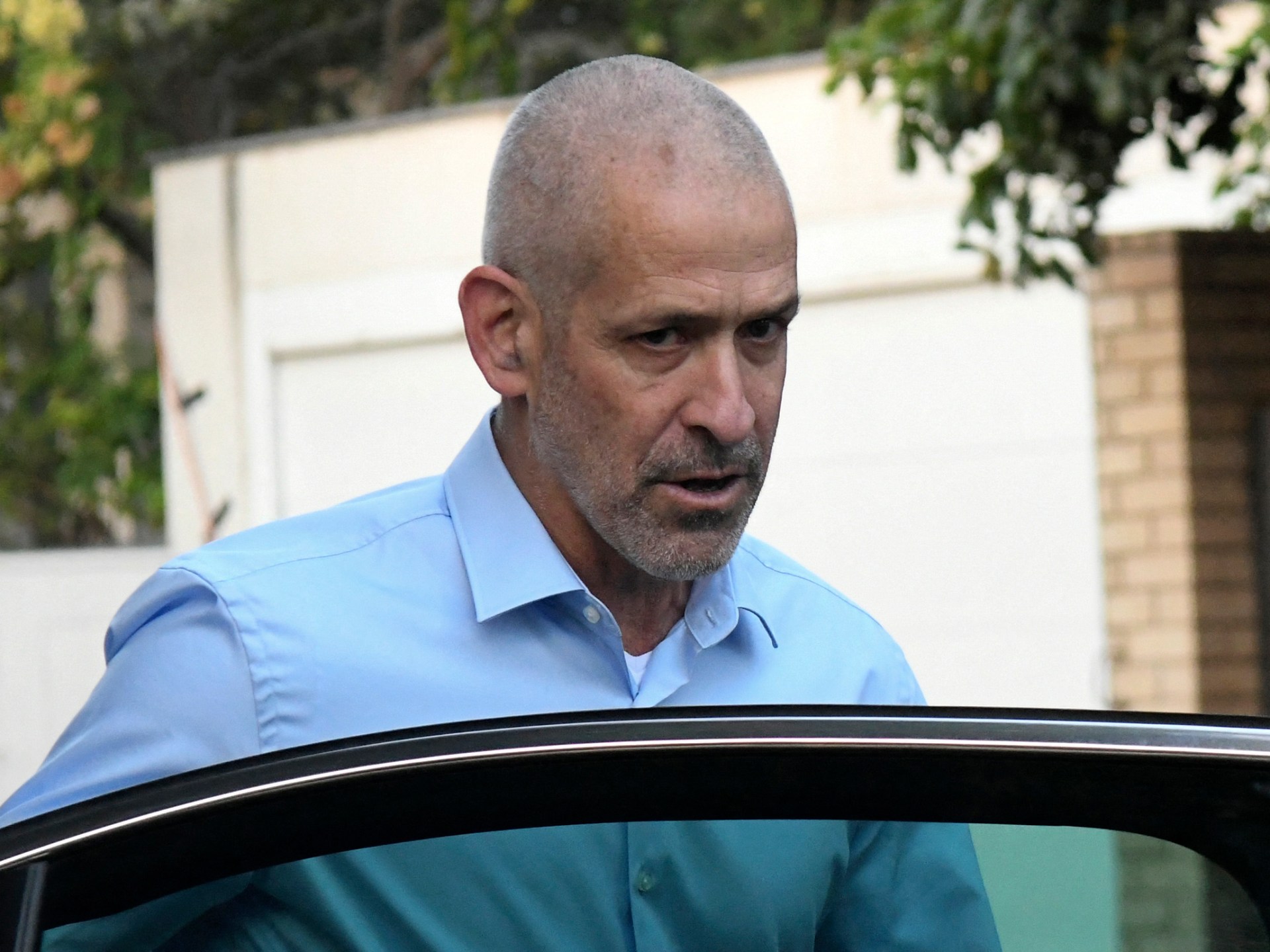
The announcement comes amid a legal battle over the government’s decision to fire the top security official last month.
Israel’s domestic security chief Ronen Bar has said he would stand down on June 15, following weeks of boiling tensions with Prime Minister Benjamin Netanyahu, who cited a lack of trust as he attempted to fire Bar in a move that sparked mass protests.
The two men have publicly traded accusations and counteraccusations. Political turmoil ensued, but Netanyahu’s survival tactics appear to have prevailed.
“After 35 years of service, in order to allow an orderly process for appointing a permanent successor and for professional handover, I will end my role on June 15, 2025,” the Shin Bet chief told a memorial event at his agency, according to a statement on Monday.
Bar had contested the sacking in a legal case that polarised the country. In an affidavit before the Supreme Court on Sunday, Netanyahu described the Bar as a “liar”.
The comment came almost a week after Bar made a sworn statement to the court in which he accused the prime minister of demanding personal loyalty and ordering him to spy on anti-government protesters.
“The accusation, according to which I allegedly demanded action against innocent civilians, or against a non-violent and legitimate protest during the protests of 2023, is an absolute lie,” Netanyahu said in his court statement.
In turn, Bar denied accusations by Netanyahu and his associates that the Shin Bet security agency had failed to issue timely warnings about Hamas’s unprecedented October 7, 2023, attack on Israel that triggered the war in Gaza.
Bar argued instead that his ouster was motivated by a desire to halt the “pursuit of truth” about the events leading up to October 7 and also the corruption charges that hang over Netanyahu in an ongoing, long-drawn-out trial.
Netanyahu proposed Vice Admiral Eli Sharvit as the next Shin Bet chief, but reversed his nomination after the pick was criticised by the United States, a key backer of Israel.
Bar’s dismissal was announced by the government last month but frozen by the Supreme Court. The move triggered mass demonstrations, with critics accusing Netanyahu and his government of undermining the institutions underpinning Israel’s democracy by seeking Bar’s removal.
Some Israelis denounced what they saw as an autocratic shift by Netanyahu, who has been launching impeachment proceedings against a number of critics, including Attorney General Gali Baharav-Miara.
The Israeli parliament last month approved a law giving politicians more power over the appointment of judges, a key component of Netanyahu’s plan to overhaul the country’s judiciary.
According to Justice Minister Yariv Levin, who sponsored the bill, the measure was intended to “restore balance” between the legislative and judicial branches. Critics, however, said the new law was a “nail in the coffin of Israeli democracy”.
The overall judicial reform package sparked one of the largest protest movements in Israel’s history in 2023 before public concern was overtaken by the war in Gaza.
Middle East
A protective force must be deployed to occupied Palestine | Israel-Palestine conflict
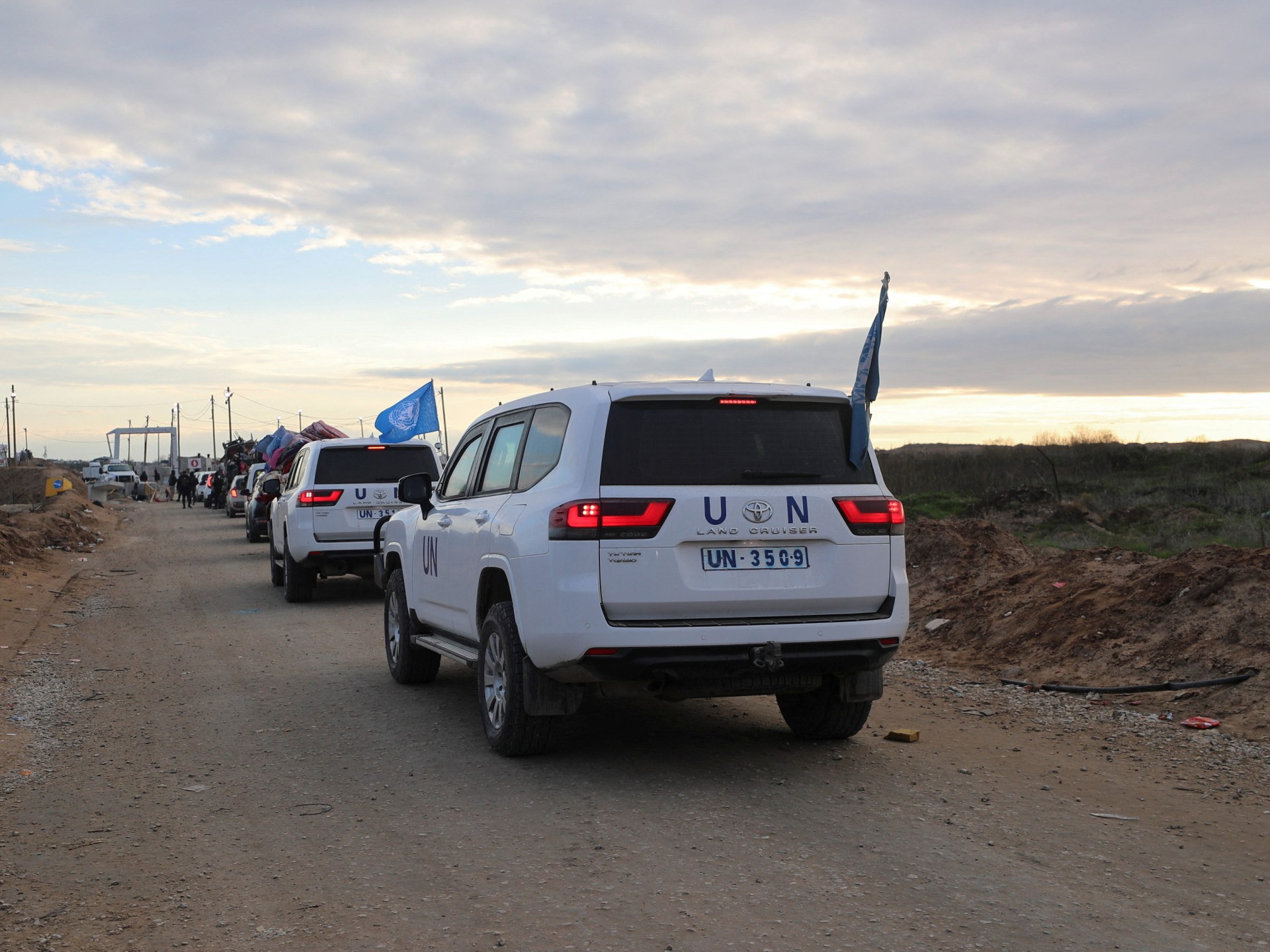
In the past few weeks, demands for the deployment of a protective force in Gaza and the West Bank have resurfaced. They have come from health professionals and medical organisations, Palestinian NGOs and even Arab civilians. Last year, the Arab League and human rights organisations also called for a peacekeeping force to be sent to Gaza.
In light of the global normalisation of livestreamed genocide and the political reluctance to enforce international law, this demand represents a bare minimum measure to safeguard Palestinians against unimaginable horrors.
The demand is firmly grounded in international law. In Gaza, a peacekeeping force could advance the duty of states and the United Nations to protect a people facing genocide, war crimes and crimes against humanity under investigation at the International Court of Justice and International Criminal Court. In both Gaza and the West Bank, such forces could support the process of ending the occupation, as demanded by the UN General Assembly and the International Court of Justice.
And yet, the demand for a protective force faces major challenges. The crucial question is: Can they be overcome?
The justification for a protective force
The situation in Gaza and the West Bank has reached unprecedented urgency and extremity. Military pressure from armed groups in Lebanon and Yemen exerted in an attempt to protect the Palestinian people did not manage to stop the atrocities, and the Lebanese and Yemeni people have paid a heavy price.
That is why an international protective force is urgently needed. Its deployment would fulfil what the Palestinian population is asking the international community to do: to protect them. This force would serve as a “human shield” – not in the derogatory sense weaponised by the Israeli military to justify its genocide by framing the entire Palestinian population as human shields but in the sense of a literal peaceful barrier between the Palestinians and their annihilation.
Its presence could mean the difference between life and mass death for civilians who have faced a year and a half of bombardment, siege and starvation.
Moreover, this force offers a critical alternative to more sinister “solutions”. As Israel escalates its genocidal campaign, imposing conditions designed to destroy Palestinian life, the United States has floated the idea of deploying its troops to Gaza to “take it over”.
Such a move would constitute an illegal US invasion of Palestine, further entrenching colonial violence under the guise of maintaining “stability”. By contrast, forces tasked with the responsibility to protect Palestinians – and not imperial and colonial interests – could provide a legitimate, internationally grounded countermeasure.
The challenges of forming a protective force
Deploying protective forces through a mandate of the UN requires a UN Security Council resolution. The US will most definitely veto any attempt to create such a force, just as it has struck down various ceasefire resolutions, in effect enabling genocide and blocking any effort to uphold even the most basic principles of humanity under the UN Charter.
The situation is undoubtedly growing more hopeless under a US administration that is actively supporting the mass expulsions and deportations of the Palestinian population from Gaza. US President Donald Trump himself has described the Gaza Strip as a “demolition site” and expressed his desire for the US to turn it into the “Riviera of the Middle East”.
Since a resolution calling for a protective force would be blocked at the Security Council, the alternative is for a multilateral call to action through the UN General Assembly. There, too, US coercive power heavily influences votes – including that of the Palestinian Authority – but it is still a viable option. The earliest such a move could happen is at the next session of the General Assembly in May and would require immense diplomatic pressure.
A vote for a protective force by the General Assembly would not be binding and would require approval by the Security Council. However, it could help create a coalition of countries signalling their willingness to intervene with concrete protection measures in defence of Palestinian life after 19 months of empty words without tangible action.
Another challenge is that the mechanism of deploying peacekeeping forces has long been regarded with suspicion by states in the Global South – and for a good reason. UN peacekeeping troops have often served as tools of policing in the Global South and as extensions of imperial control, at times committing atrocities themselves.
Historically, peacekeeping has largely aligned with imperial interests, rarely opposing them. Troop-contributing countries often have questionable military alliances, and peacekeeping operations depend on funding from large donors, such as the US. A good example of this is the UNIFIL peacekeeping mission in Lebanon, which has an unusually high European presence and which has failed to protect the south of the country from Israel’s aggression.
Given all these challenges, do we abandon the demand for a protective force in occupied Palestinian territory? Absolutely not.
A radical reimagining of protective forces
The obstacles are real, but the demand for a protective force is legitimate. It comes from within multiple sectors of Palestinian society itself and is endorsed globally by antigenocide individuals and groups.
In a recent petition, Palestinian and international health workers proposed a model: a neutral, multinational protective mission – not to mediate, but to shield. Their demands include excluding nations complicit in the assault from contributing troops and a mandate for the protective force to physically shield Palestinian civilians and healthcare workers, to restore safe humanitarian and medical corridors, and to support Palestinian-led rebuilding of Gaza’s obliterated infrastructure.
Similarly, the Palestinian NGOs Network has called for international protection, open crossings into Gaza and guaranteed safe aid corridors.
Meanwhile, Egyptian civilians have repeatedly declared their readiness to enter Gaza as a civilian shielding force if borders are opened. This underscores the potential for people-powered protection alongside formal mechanisms.
To translate into action these multiple calls, a radical reimagination of what a protective force might look like and how it could work is required.
First, we need states uninvolved in the genocide and civil society groups to push for bypassing the UN Security Council. They must focus all efforts and leverage on the UN General Assembly’s Emergency Special Session in May to stand up to US pressure and push for a vote on a peacekeeping mandate.
Second, we need new South-South alliances. This means strategic partnerships among Global South nations uninvolved in the genocide to fund and staff a mission free from imperial influence that can proceed even without Security Council permission.
Third, we need an unprecedented mobilisation of civil society in a single direction: pressuring governments to endorse and participate in a truly neutral protective force.
The US would oppose the creation of new coalitions that centre Palestinian life and present themselves as the Southern champions of the responsibility to protect doctrine. It would see this as defiance of its hegemony and the Western monopoly over antigenocide discourse, and it would use its veto at the council. However, the countries and civil society groups involved in establishing the protective force should disregard the veto, form the mission autonomously and defy the genocidal international order in which we live.
The challenges facing this radical reimagination effort are formidable. But the alternative is to continue leaving Palestinian lives unprotected – at the mercy of an intensifying process of settler-colonial extermination. We must act now and push for a protective force for occupied Palestine.
The views expressed in this article are the authors’ own and do not necessarily reflect Al Jazeera’s editorial stance.
Middle East
Deadly US strike hits Yemeni migrant centre | Israel-Palestine conflict News
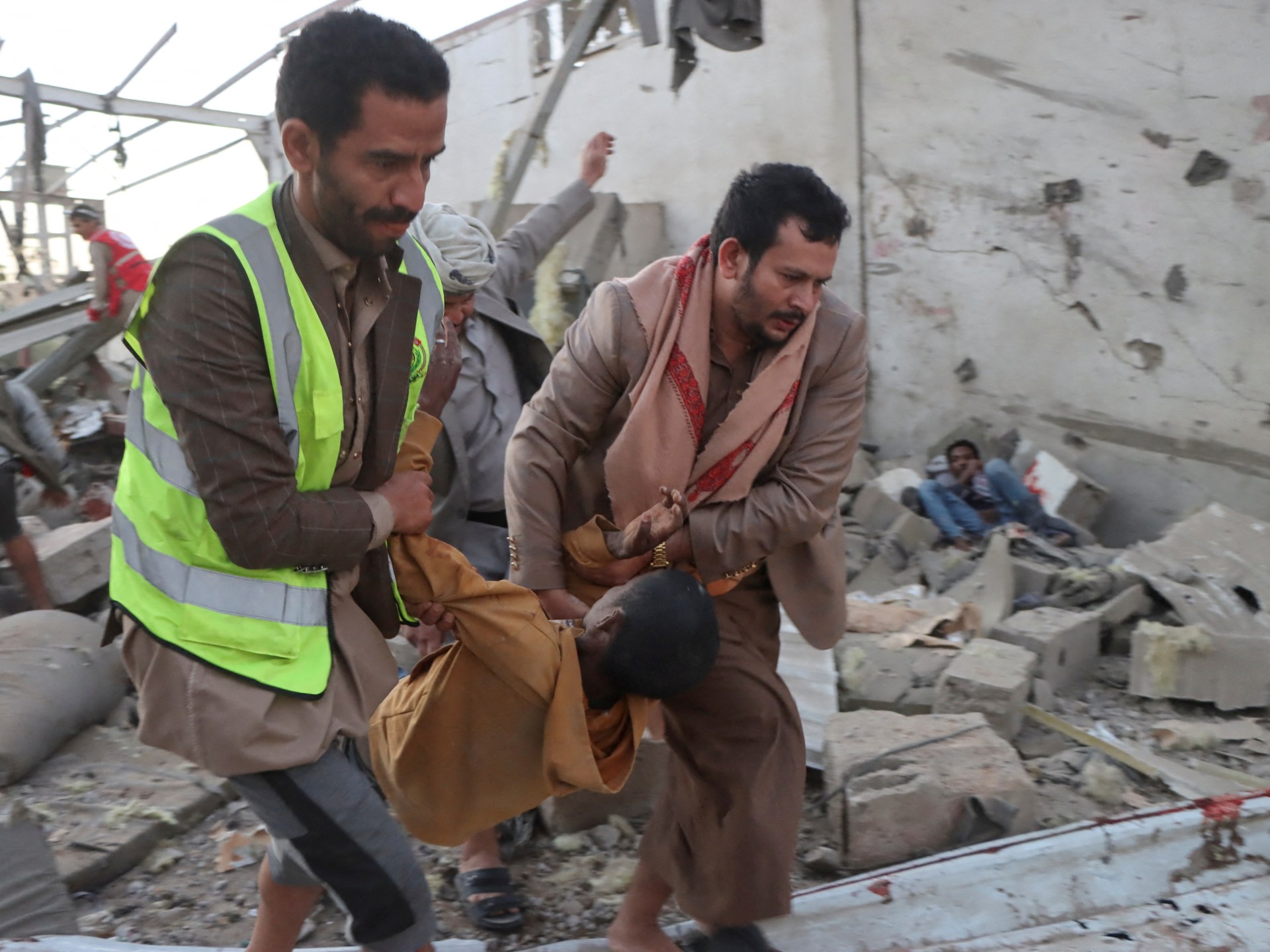
United States military strikes in Yemen have killed 68 people and wounded 47 as they hit a detention centre holding African migrants, according to Houthi-affiliated media reports.
The strike in the Saada governorate, a Houthi stronghold, is the latest incident during a decade of conflict to kill African migrants from Ethiopia and other nations who risk crossing Yemen for a chance to work in neighbouring Saudi Arabia.
The US military’s Central Command (CENTCOM), responsible for military operations in the Middle East, refused to offer details of the latest strikes but acknowledged carrying out more than 800 hits on targets in Yemen since mid-March. More than 250 people are now reported to have been killed in the campaign.
Graphic footage aired by the Houthis’ Al Masirah TV news channel showed what appeared to be human bodies and injured people at the site. The Houthi-run Ministry of Interior said some 115 migrants had been detained at the site before the strike.
The broadcaster showed footage of bodies stuck under the rubble and of rescuers working to help the casualties.
Each year, tens of thousands of migrants brave the Eastern Route from the Horn of Africa, seeking to escape conflict, natural disasters and poor economic prospects by sailing across the Red Sea towards the oil-rich Gulf region.
Many hope for employment as labourers or domestic workers in Saudi Arabia and other Gulf Arab countries, though they face a perilous journey through war-torn Yemen.
The Houthis, who are accused of detaining and abusing the migrants, allegedly earn large sums smuggling them over the border. Those seeking to cross take a significant risk, with the threat of detainment and abuse added to by the long-running conflict.
-

 Africa2 days ago
Africa2 days agoUganda declares end to Ebola outbreak
-

 Europe1 day ago
Europe1 day agoLiverpool secures historic Premier League title after beating Tottenham
-
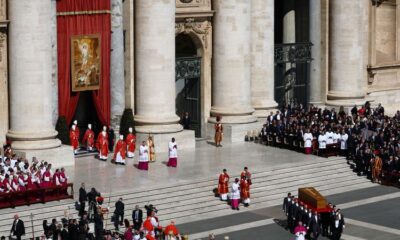
 Europe2 days ago
Europe2 days agoFrancis celebrated as ‘pope among the people’ in Vatican funeral attended by massive crowd
-

 Europe2 days ago
Europe2 days agoTrump and Zelensky hold war talks inside St. Peter’s Basilica ahead of pope’s funeral
-

 Middle East12 hours ago
Middle East12 hours agoDeadly US strike hits Yemeni migrant centre | Israel-Palestine conflict News
-

 Lifestyle2 days ago
Lifestyle2 days agoMarket turmoil has many afraid to check retirement savings
-
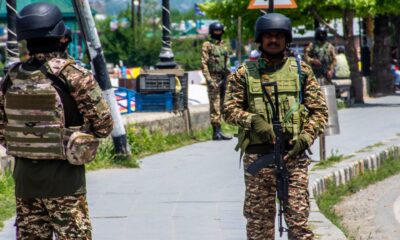
 Conflict Zones13 hours ago
Conflict Zones13 hours agoIndia and Pakistan continue to trade fire across Kashmir border | Conflict News
-
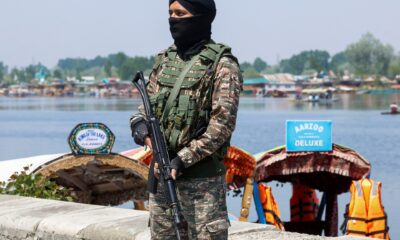
 Conflict Zones18 hours ago
Conflict Zones18 hours ago‘Burst balloon’: How Pahalgam attack shattered Modi’s Kashmir narrative | Narendra Modi News




